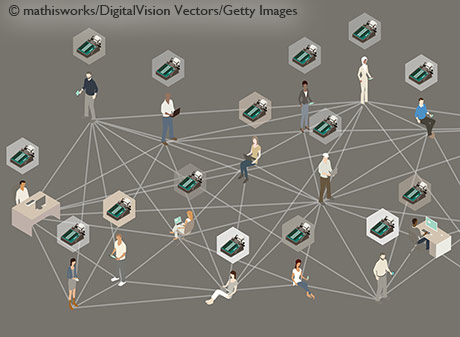Beyond Bitcoin: A Look at Distributed Ledger Technology

This post is part of a series titled “Supervising Our Nation’s Financial Institutions.” The post was written by Julie Stackhouse, then-executive vice president and officer-in-charge of supervision at the St. Louis Fed. She is now retired.
This blog post is the fifth and final in a series about fintech and how it is affecting the banking industry. Last month, we looked at how digital, or mobile, wallets work. This month, we examine distributed ledger technology.
It has been a decade since the digital currency called Bitcoin was introduced. At the time, the concept of a virtual medium of exchange was largely unknown—and even frightening—to many in the general public.
Today, CoinMarketCapCoinMarketCap tracks most of the alternative coin systems that have hit the market, including Bitcoin. It shows users the current value in dollars and bitcoins for each coin. tracks more than 1,600 digital currencies. And common to all of the currencies is the use of a digital accounting system: a shared, consensus-based system called distributed ledger technology (DLT).Bitcoin uses a particular type of DLT called blockchain. Every blockchain is a distributed ledger, but not every distributed ledger is a blockchain.
DLT Defined
Over the past decade, numerous types of distributed ledgers have been introduced, all offering a secure way to transfer assets. To qualify as a distributed ledger, three key elements must be present:
- Peer-to-peer networking and distributed data storage: Each network participant has a copy of a single ledger that contains a shared history of all transactions.
- Cryptography: The use of encryption provides security prior to a transaction, allowing participants to verify ownership and the availability of an asset to transfer.
- Consensus mechanisms: Participants mutually agree on what is added to the ledger, and a chronological, unchangeable history of previous transactions is created.
Not all ledgers have the same access rights. Access to a ledger may be unpermissioned or permissioned. An unpermissioned public shared ledger has no single owner and is open to all to view and participate. Bitcoin’s blockchain ledger is an example of an unpermissioned public shared ledger. Participants both initiate and validate transactions.
Alternatively, a permissioned public shared ledger can have one or many owners, who limit participation to trusted users. Anyone can view this type of ledger, but only trusted users can initiate or validate transactions. Permissioned private shared ledgers also have one or many owners, who limit visibility and participation to trusted participants. Traditional financial institutions would gravitate toward this type of ledger.
DLT in Financial Services
DLT offers a number of promising applications for financial institutions, including foreign exchange transactions, international money transfers, securities clearing and settlement, collateral management, derivatives, and data management. Proponents of DLT in financial services and other industries tout numerous benefits of the technology, including:
- Efficiency: The costs associated with duplicated records and account reconciliations are reduced or eliminated with DLT.
- Transparency: The tamper-proof nature of DLT makes auditing and governance easier. In a blockchain, for example, no participant can attempt to change any data in the ledger without all other participants being notified.
- Speed: Settlement times for securities transactions, for example, may be reduced as digital assets are exchanged while a trade is being executed.
Inherent Challenges with Technology
While distributed ledgers hold promise, their potential for clearing and settlement of financial transactions presently faces challenges. Importantly, both real and perceived security concerns must be overcome.
Moreover, interest in adopting the technology must become far more widespread than it is today. In addition, the technology must be proven to “scale” for high-volume transactions, especially with permissioned private shared ledgers. And finally, global legal and regulatory minefields must be traversed.
Notes and References
1 CoinMarketCap tracks most of the alternative coin systems that have hit the market, including Bitcoin. It shows users the current value in dollars and bitcoins for each coin.
2 Bitcoin uses a particular type of DLT called blockchain. Every blockchain is a distributed ledger, but not every distributed ledger is a blockchain.
Additional Resources
- On the Economy: Fintech: How Digital Wallets Work
- On the Economy: Demystifying Blockchain
- Open Vault: How a Blockchain Can Keep People Honest (and Log Uncooperative Behavior)
Citation
Julie L Stackhouse, ldquoBeyond Bitcoin: A Look at Distributed Ledger Technology,rdquo St. Louis Fed On the Economy, July 24, 2019.
This blog offers commentary, analysis and data from our economists and experts. Views expressed are not necessarily those of the St. Louis Fed or Federal Reserve System.
Email Us
All other blog-related questions

